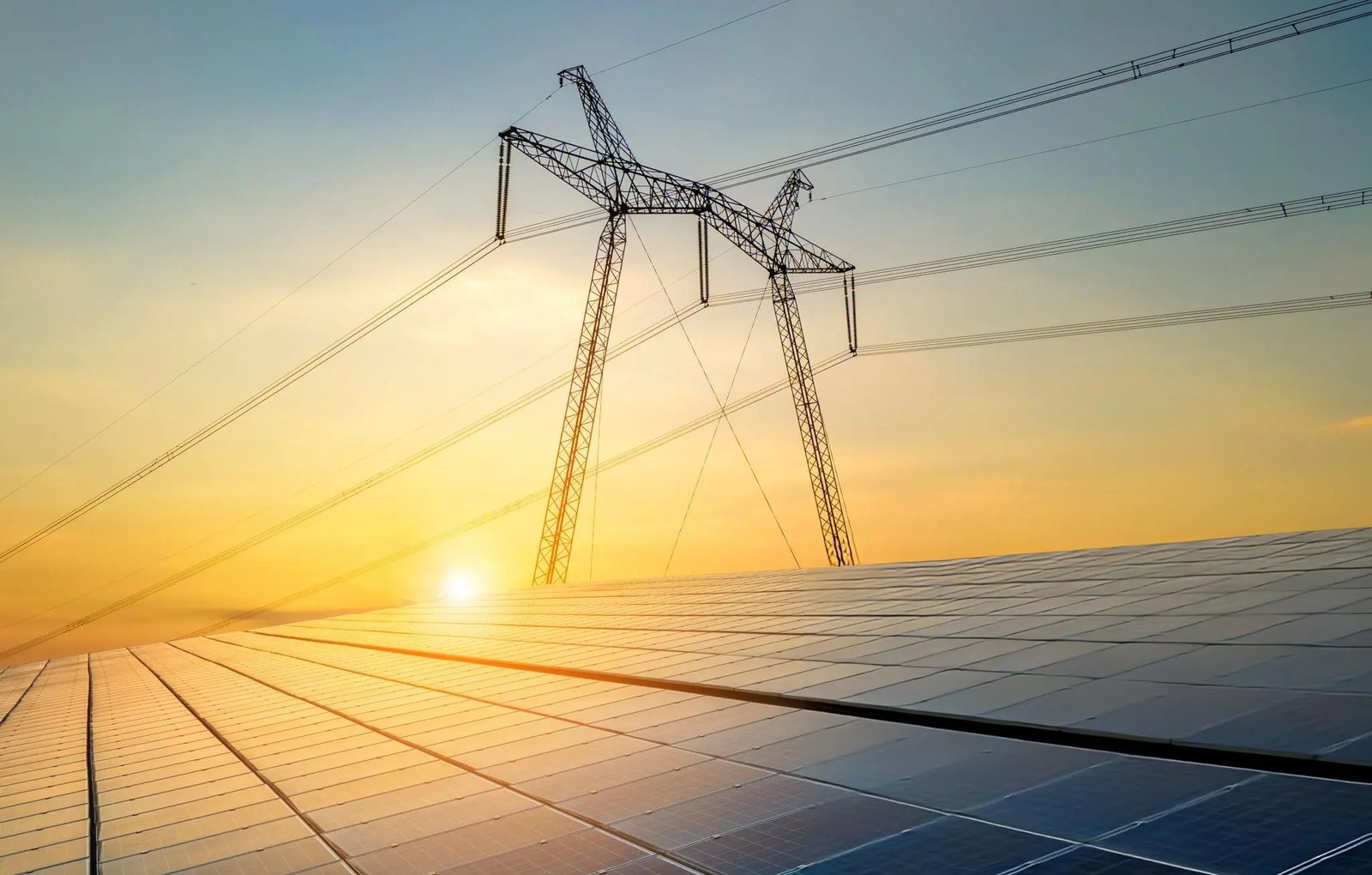
Solar Rooftop System Installation
Professional solar installation services for industrial, commercial, and residential properties. Harness clean energy with our certified solar solutions.
Government Subsidy Available!
Get up to ₹78,000 subsidy for House/Housing Society installations under PM Surya Ghar Yojana
Our Solar Installation Projects
Explore our portfolio of successful solar installations across Maharashtra. From residential farmhouses to large industrial facilities, we deliver reliable solar solutions tailored to every need.
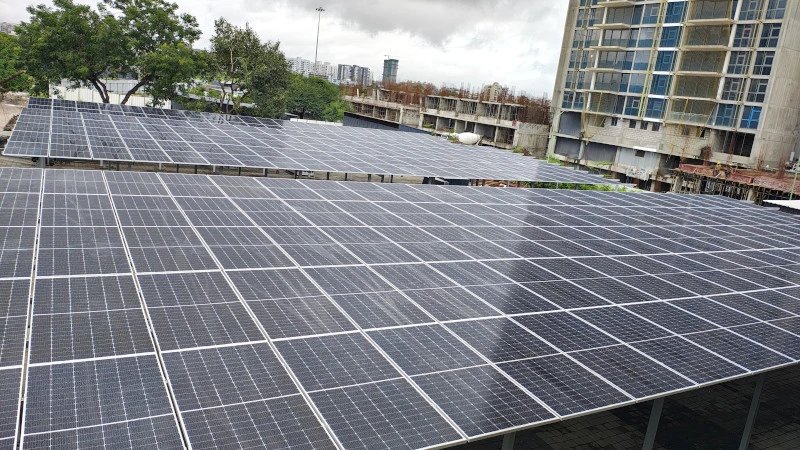
160kW solar on-grid project completed at Bhiwandi for industrial facility with efficient energy generation and grid connectivity
Swipe to browse projects
Solar Power Systems
We offer complete On-Grid, Off-Grid, and Hybrid Solar Solutions designed for residential, commercial, and industrial applications. Each system type provides unique advantages based on your energy needs and location.
Specifications
- •Type: On Grid
- •Capacity: 3 kW
- •Industrial IP Rating
- •Complete home solution
Key Benefits
- •Net-metering for bill credits
- •Lower upfront cost (no batteries)
- •Ideal for reliable grid areas
- •Capacity: 1 kW - 500 kW
Best For:
Homes, offices, and industries wanting to cut electricity costs while staying connected to the grid
Specifications
- •Capacity: 20 kW
- •Min Area: 2000 sq ft
- •Projects: 3KW to 500KW
- •V-Guard Authorized System
Key Benefits
- •Uninterrupted power supply
- •Complete energy independence
- •Scalable battery backup
- •No reliance on main grid
Best For:
Rural homes, farms, and locations where grid power is unavailable or unreliable
Key Benefits
- •Backup power during outages
- •Storage + net-metering savings
- •Flexible cost-reliability balance
- •Maximizes energy utilization
Best For:
Businesses or households that need both cost savings and continuous power
Why Choose Our Solar Solutions?
Quality & Warranty
- •25-year warranty on solar panels
- •10-year warranty on inverters
- •ISO and CE certified systems
- •96% system efficiency
Our Advantages
- •Made in India components
- •Authorized Partner of All Major Brands
- •Flexible configurations (1kW to 500kW)
- •Complete installation support
Core Elements of Solar Installation
Solar setups rely on three main parts working together: panels that grab sunlight, inverters that make the power usable, and mounting systems to keep everything solid and secure.
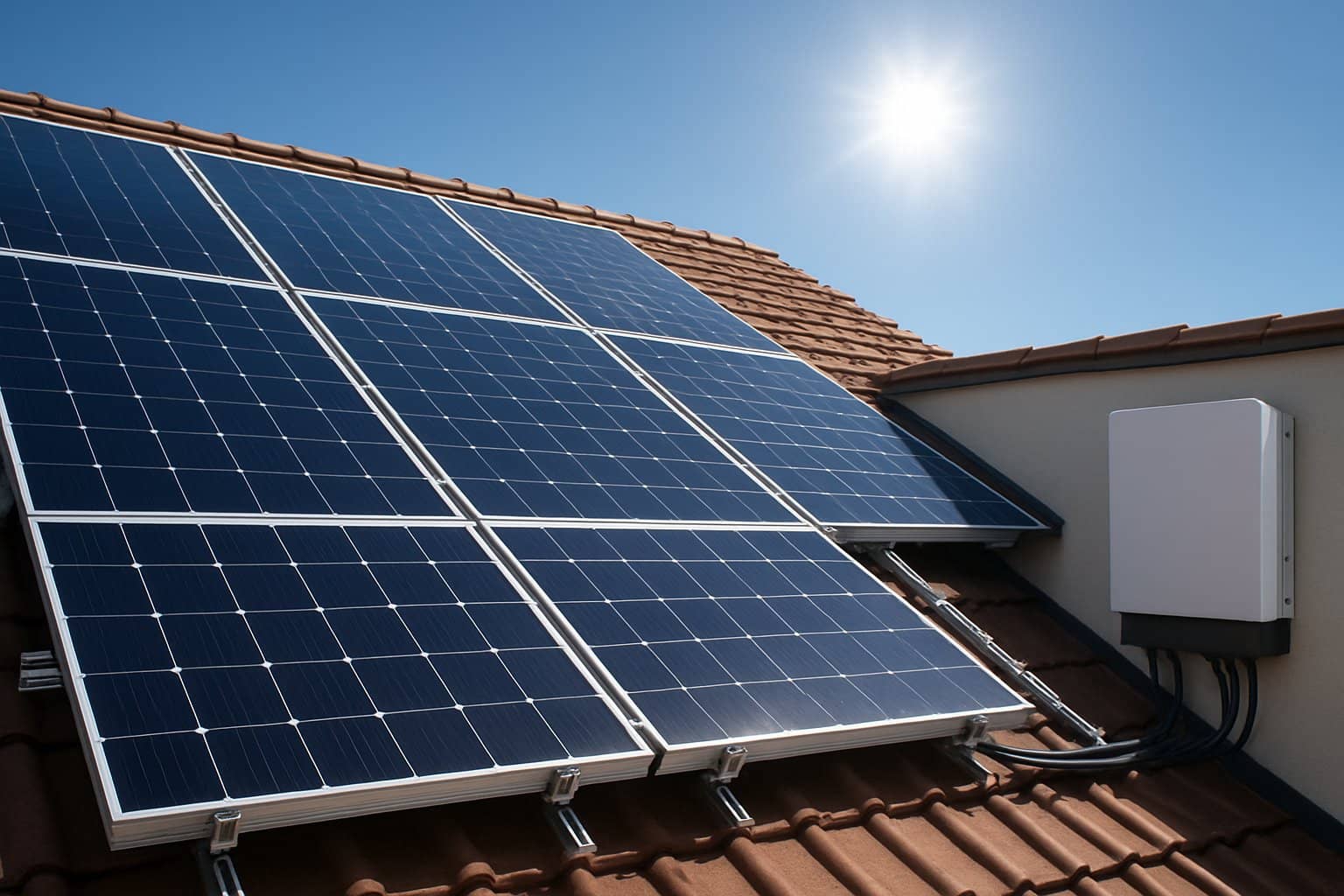
- Most efficient option
- Works well in low light
- Ideal for limited roof space
- More affordable option
- Good for ample roof space
- Reliable performance
- Lightweight and flexible
- Lower upfront cost
- Requires more space
Panel Wattage: Usually ranges from 250 to 400 watts each. Higher wattage means more power generation, but also a higher upfront cost.
Solar Installation Process Explained
Getting solar panels up and running takes four main steps. It starts with a roof check and ends with your system feeding power into your home's grid.
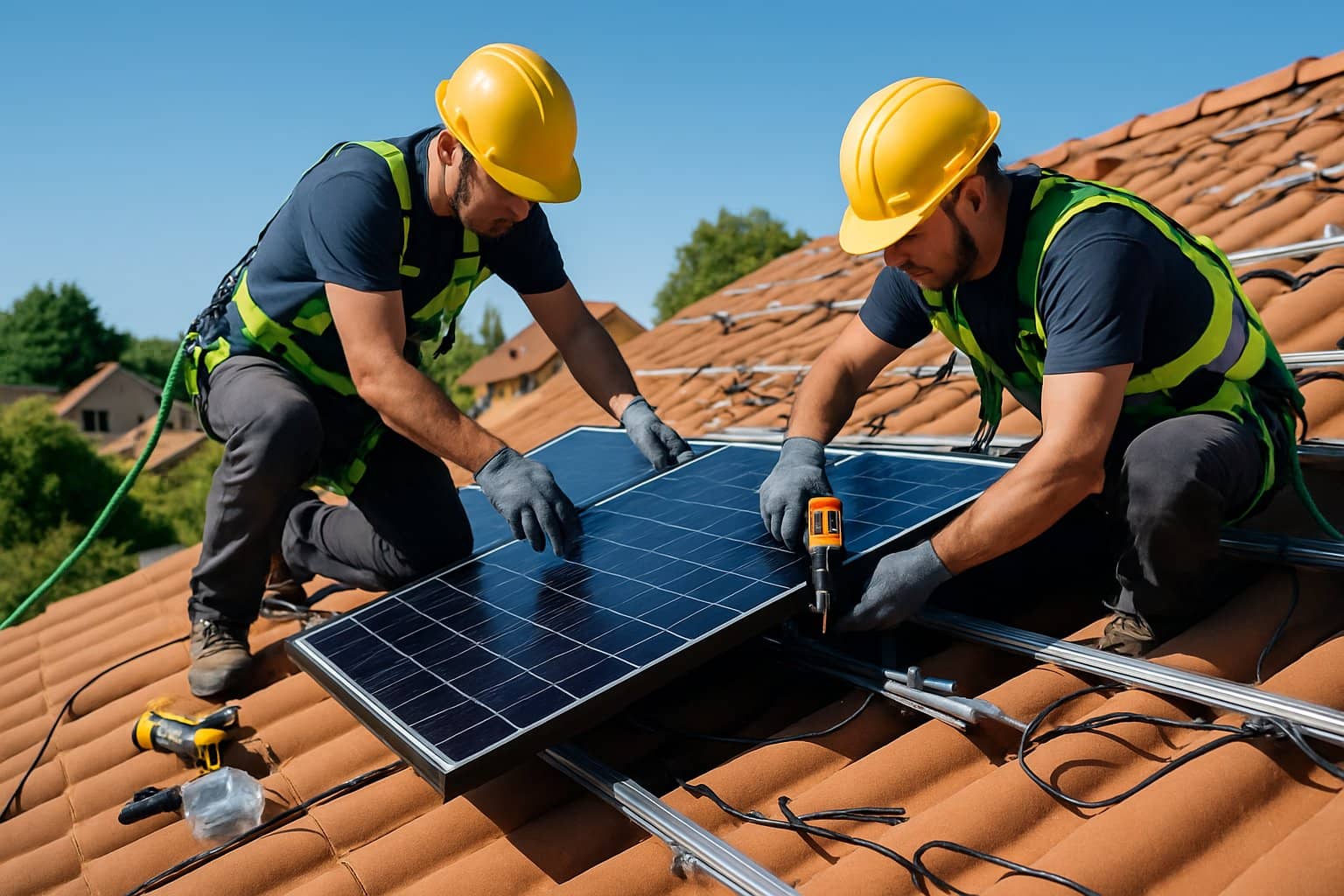
Roof inspection, orientation check, shading analysis, and structural assessment
Energy consumption analysis and custom system design for your needs
Professional panel mounting, electrical setup, and safety compliance
System testing, grid connection, and performance verification
Grid Connection and Battery Storage Options
Your solar setup can be tied to the grid, run off-grid, or use batteries for backup and more independence. Each option changes the cost, reliability, and how you use your solar power.
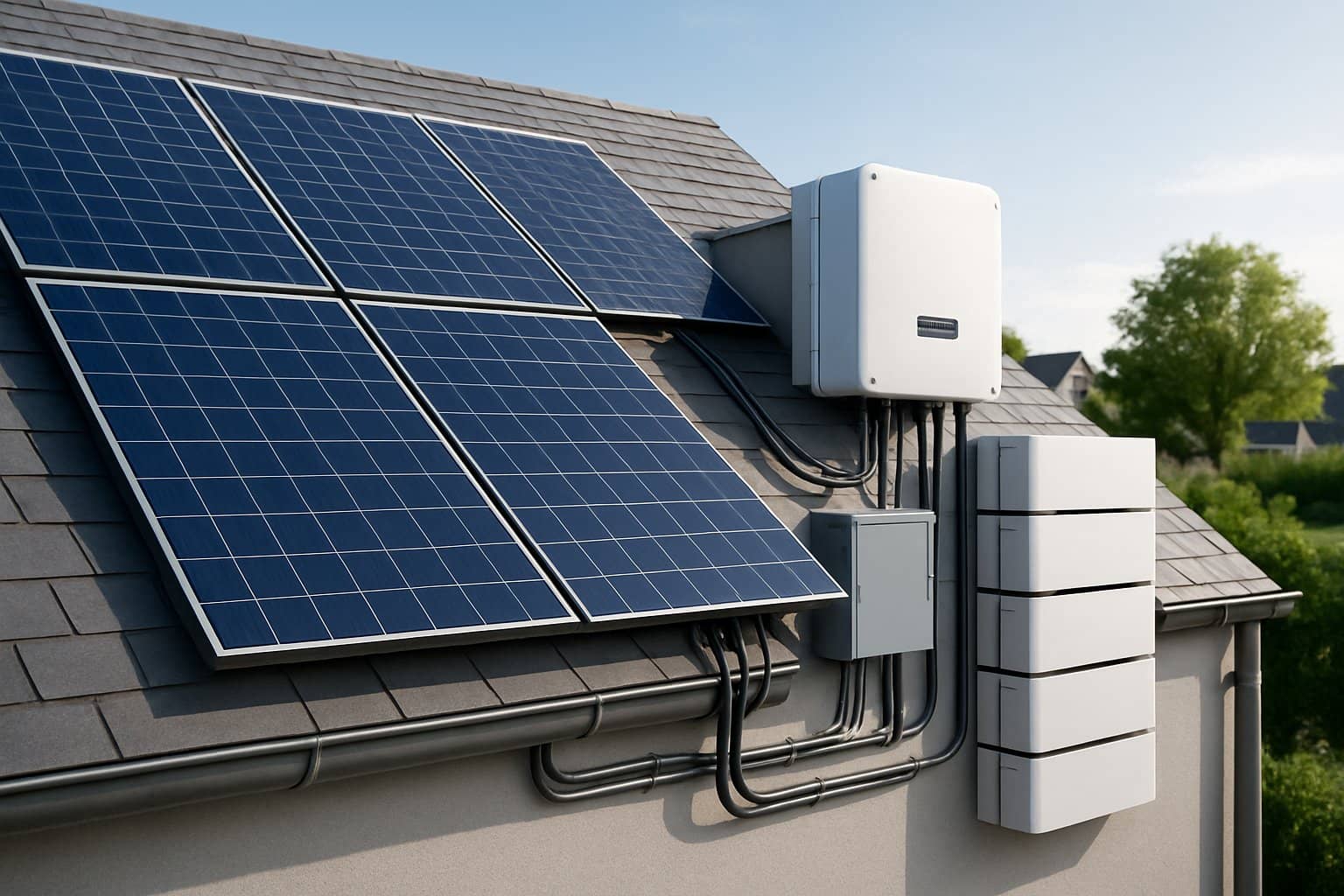
You can send extra power back to the utility and pull from the grid when you need more.
Key Benefits
- Lower upfront cost (no batteries needed)
- Net metering for bill credits
- Simple and reliable
- Excess power generates revenue
Aren't hooked up to the utility at all. You'll need batteries to store power for nighttime or cloudy days.
Key Benefits
- Total energy independence
- Perfect for remote locations
- No reliance on grid stability
- Uninterrupted power supply
Backup Power
Batteries kick in for essential circuits when grid fails
Cost Savings
Use your own power and bank credits from excess generation
Maximum Efficiency
Maximizes energy utilization with flexible cost-reliability balance
- Last 10-15 years
- Charge fast and efficiently
- Compact and lightweight
- Handle most climates well
- Low maintenance required
- Lower upfront cost
- Bulkier and heavier
- Need more maintenance
- Wear out faster
- Suitable for basic backup needs
Monitoring, Maintenance, and Efficiency
Solar systems need regular checkups and a bit of maintenance to keep cranking out energy. Smart monitoring helps you spot issues early, and a little upkeep keeps your panels working for decades.

- Temperature affects output (0.4% per degree above 77°F)
- Most panels maintain 80% efficiency after 25 years
- Daily energy production tracking
- System alerts for problems
- Performance vs expected output
- Individual panel tracking
Connect via WiFi or cellular to check from anywhere
Monthly Tasks
- Visual inspection
- Check connections
- Monitor performance
- Clean panels as needed
Costs, Subsidies, and Environmental Impact
Solar installation costs in India have come down a lot, thanks to government subsidies and better tech. These programs are opening up solar to more families, plus the long-term environmental perks are hard to ignore.
- Direct financial grants
- Digital application platforms
- Net metering policies
- State-level additional incentives
Payback Period: 5-7 years with current subsidies
CO₂ prevented yearly (3kW system)
- Reduces air pollution from coal plants
- No water consumption for electricity
- Unlimited renewable energy source
- Reduced strain on power grid
Monthly bill reduction
Panel warranty
- Sell excess power back to grid
- Increased property value
- Hedge against rising energy prices
Personal Benefits
- More control over energy costs
- Backup power during outages (with batteries)
National Benefits
- Less money spent on fuel imports
- More stable power grid
- Reduced dependence on fossil fuels
Frequently Asked Questions
Choosing solar panels comes down to your space, budget, and how much energy you actually use. Placement matters for efficiency, and the install can affect your insurance and long-term savings.
